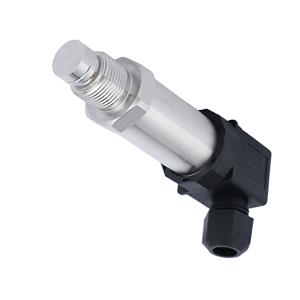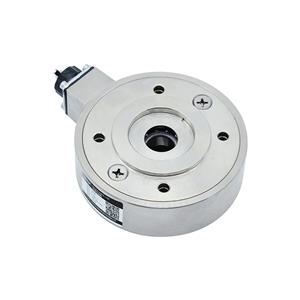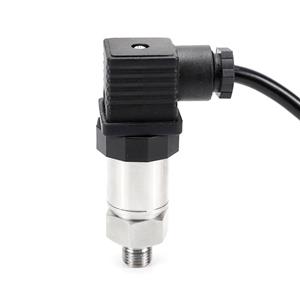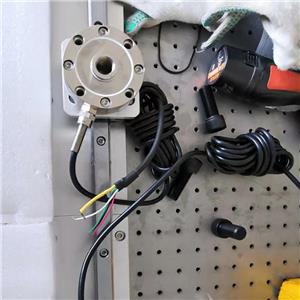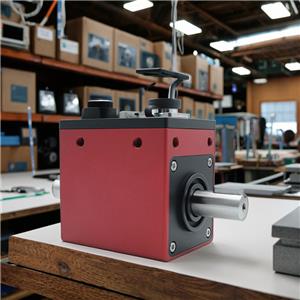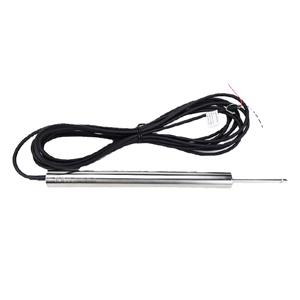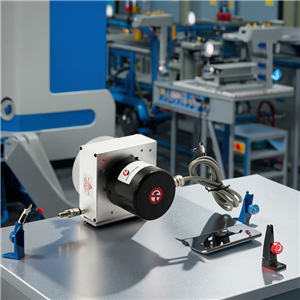News
-
12-13 2025
Application of pressure sensor
Pressure sensors are mainly used in: booster cylinder, supercharger, gas-liquid booster cylinder, gas-liquid supercharger, press, compressor, air conditioning and refrigeration equipment and other fields.
-
12-10 2025
Selection, Working Principle, and Application of Tension Sensors
The tension sensor is suitable for dynamic measurement and static measurement. A strain gauge made of a metal wire machine or a metal cat strain gauge is attached to the back of the load surface. When the load surface is stressed, the strain gauge will deform and its electrical parameters will change accordingly. Tension sensor has a very important application in many fields of people's daily life, so we must pay attention to ensure that the tension sensor can work normally during the application. Let's understand the selection principle and application of tension sensor together:
-
12-05 2025
Methods of preventing overload of pressure sensor
According to the pressure range of the actual application scene, the pressure sensor with adaptive range is selected. For example, in the industrial pipeline pressure monitoring scene, if the normal working pressure of the pipeline is 0-10MPa, considering the possible inter-pressure fluctuation, the sensor with a measuring range of at least 15MPa should be selected, and sufficient margin should be reserved to prevent the pressure from approaching or exceeding the upper limit of the sensor measuring range under normal working conditions.
-
12-02 2025
Application of spoke weighing sensor
Spoke force sensor is also the most common sensor in our industrial practice. Because of its advantages of shock resistance, vibration resistance, high precision, high stability and wide working temperature range, it is widely used in many industries. So how much do you know about the main principles and principles of structural design of spoke force sensor? Next, let's understand the main principles and principles of structural design of spoke force sensor:
-
11-29 2025
Trouble shooting of torque sensor
The torque sensor works in obscurity at ordinary times. Once there is a problem, it can really affect the whole production line. Have you ever had a headache with inaccurate display, jumping data and no response? Today, let's take a look at some common troubleshooting of torque sensors.
-
11-26 2025
Precise Perception, driving the future: Exploring the outstanding Value and boundless Prospects of KTC linear sensors
In the cutting-edge fields of industrial automation, precision manufacturing and intelligent measurement, the accuracy of data is the cornerstone of decision-making and control. As the "sensory nerve" connecting the physical world with digital systems, the significance of displacement sensors is self-evident. Among them, KTC linear sensors, with their outstanding performance, reliable quality and forward-looking technical design, are becoming the trusted choice of many industry customers, helping enterprises move towards a new era of intelligence.
-
11-21 2025
How much do you know about LVDT linear displacement sensor?
LVDT linear displacement sensor is widely used in various fields because of its unique performance advantages: Industrial automation: In industrial automation production lines, LVDT is often used to measure the displacement, position and other parameters of mechanical parts to achieve accurate control and monitoring. Aerospace: In the aerospace field, LVDT is used to measure structural deformation, vibration and other parameters of aircraft such as airplanes and rockets, which is of great significance to the safety and stability of aircraft. Energy and chemical industry: In the energy and chemical industry, LVDT can be used to measure the displacement and deformation of pipelines, valves and other equipment to ensure the normal operation and safety of the equipment. Automobile manufacturing: In the automobile manufacturing industry, LVDT is used to measure the displacement and position change of automobile suspension system, braking system and other components to improve the performance and comfort of automobiles. Scientific research and experiment: In the field of scientific research and experiment, LVDT, as a high-precision measuring tool, is widely used in mechanical properties testing of materials and structural vibration analysis.
-
11-20 2025
How much do you know about the cable displacement sensor?
Rope displacement sensor is also called rope sensor, rope sensor, rope electronic ruler and rope encoder. Pulling-rope displacement sensor is a delicate structure of linear displacement sensor, which fully combines the advantages of angle sensor and linear displacement sensor, and becomes a sensor with small installation size, compact structure, large measuring stroke and high precision, with the stroke ranging from several hundred millimeters to more than ten meters.
-
11-11 2025
What is a linear displacement sensor KTR?
KTR linear displacement sensor (especially miniature self-recovery series) is a kind of high-precision measuring element specially designed for narrow space and harsh environment, with automatic spring reset function. The following are its main application fields and characteristics:
-
10-31 2025
What is a torque sensor?
Torque sensor is a precise measuring instrument for measuring various torques, rotational speeds and mechanical power. The application range is very wide, mainly used for: 1, motor, engine, internal combustion engine and other rotating power equipment output torque and power detection; 2. Detection of torque and power of fan, water pump, gear box and torsion wrench; 3. Detection of torque and power in railway locomotives, automobiles, tractors, airplanes, ships and mining machinery; 4. It can be used to detect the torque and power in the sewage treatment system; 5, can be used for manufacturing viscometers; 6. It can be used in process industry and process industry; 7. It can be applied to laboratories, testing departments, production monitoring and quality control;


